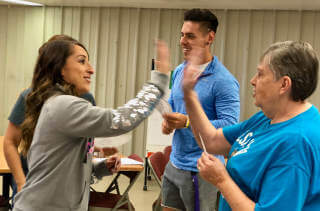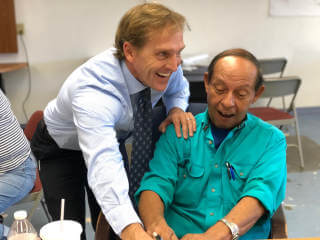"Give a person a fish; that person eats today. Teach a person how to fish; they eat for life."
Strategies, the fourth SIOP component, finds itself in the middle of the 8 component framework. This component concerns itself with learning strategies, higher order thinking strategies, and the strategy of scaffolding students into success.
The strategies aspect of this component can be found on a number of levels. The most obvious is the first of three features which invites educators to actively teach students strategies (E.g. paraphrasing, note-taking). The second feature focuses on the strategy of scaffolding: one of the most important teaching strategies there is to master. The third and final feature deals with the strategy of promoting higher order thinking skills in the classroom. All three of these deal, in one way or another, with a learning or teaching strategy.


Coupling learning strategies (predicting, inferring, etc) with the strategy of scaffolding suggests how useful scaffolding can be in promoting learning strategies and higher order thinking skills.
Teaching students what metacognition (thinking about your thinking) and how to harness its power in a deliberate manner can have a powerful influence on everything from engagement to achievement. TESOL Trainers can show teachers how to hone metacognitive skills.
Consciously teaching learning strategies is a way to empower students. The same can be said for scaffolding students into using their critical thinking skills more effectively.
One of the most well known scaffolding models is the Gradual Release of Responsibility. This four stage model demonstrates how the responsibility is transferred from the teacher to the learners over the duration of a lesson. It's quite simple and quite powerful. Here are its four stages. TESOL Trainers offers K-12 professional development on the gradual release of responsibility.
For more on scaffolding, view SIOP Feature #14 or our section on scaffolding.
Empowering students with learning strategies helps promote learning independence. Stimulating higher order thinking skills gives the brain a workout. Using the strategy of scaffolding helps students transition from renting these skills to owning them. This fourth component of SIOP examines how to create learner autonomy through consciously teaching learning strategies, purposefully training students to think deeply, and deliberately chunking the process so students are more likely to succeed.
Please Contact us for detailed information on how we can help your educational institution set all teachers and learners up for success.

There are plenty of reasons to invite TESOL Trainers to provide professional development on SIOP to your teaching staff. Here are four of the most powerful:
Click the button below to claim your free ebook and join our mailing list.